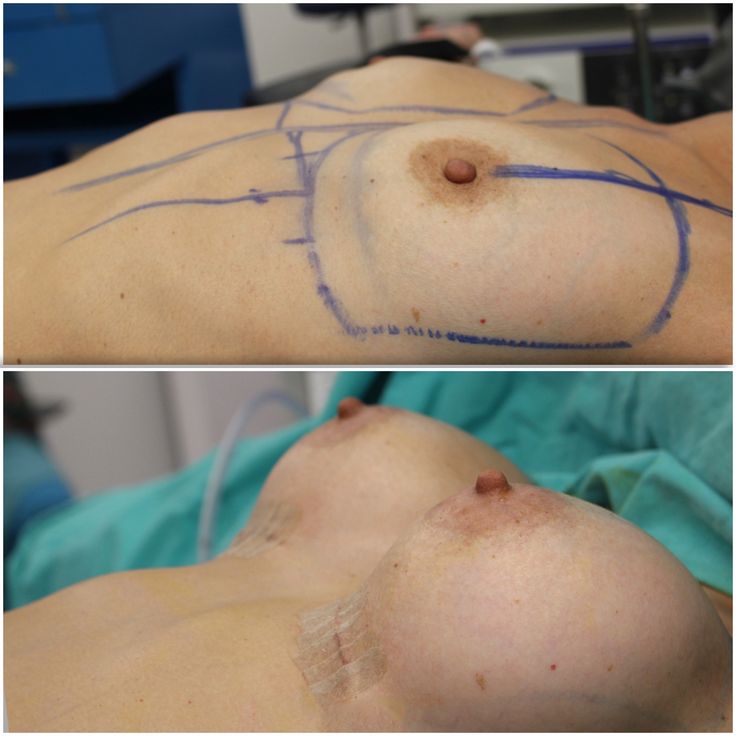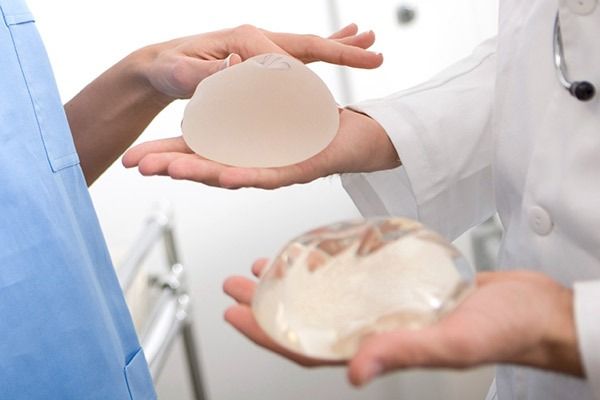Breast surgery Philippines has become a popular choice for many individuals seeking to enhance their appearance or address medical concerns. This comprehensive guide will delve into the various aspects of breast surgery, providing valuable insights and information to help you make informed decisions about your health and well-being.
Table of Contents
ToggleUnderstanding Breast Surgery
Breast surgery is a medical procedure that focuses on the modification, correction, or enhancement of breast tissue. In the Philippines, it has gained significant popularity, not only for aesthetic reasons but also for reconstructive purposes. The demand for breast surgery reflects the evolving perceptions of beauty and the increased awareness of personal health issues connected to breast size and shape.

Definition and Purpose of Breast Surgery
At its core, breast surgery encompasses a variety of procedures aimed at altering the size, shape, or structure of the breasts. The primary purpose can range from cosmetic enhancements to reconstructive efforts post-trauma or illness, such as mastectomy for breast cancer patients.
Breast surgery serves multiple purposes, including:
- Enhancing self-esteem and body image through augmentation.
- Providing relief from physical discomfort due to overly large breasts via reduction.
- Restoring breast shape and volume after surgical removal for cancer treatment through reconstruction.
Understanding these definitions helps clarify the varied motivations behind choosing breast surgery and paves the way for further exploration of its types and applications within the context of the Philippines.
Types of Breast Surgery Available in the Philippines
In the Philippines, several types of breast surgeries cater to different needs and desires. The most common procedures include breast augmentation, breast reduction, breast reconstruction, and gynecomastia surgery. Each procedure has unique techniques tailored to individual requirements.
Breast augmentation involves the use of implants to increase breast size, while breast reduction focuses on alleviating the physical burden associated with larger breasts. Reconstruction plays a vital role for those recovering from breast cancer, aiming to restore natural appearance and confidence. Gynecomastia surgery addresses male breast enlargement, emphasizing inclusivity in treating various patient demographics.
Common Reasons for Undergoing Breast Surgery
The decision to undergo breast surgery can stem from numerous factors, both personal and medical. Some individuals may pursue surgery primarily for aesthetic appeal, wishing to conform to certain beauty standards or enhance their self-image. Others might seek surgical intervention for practical reasons, such as experiencing discomfort due to large breasts affecting posture or mobility.

Medical reasons also play a crucial role in this decision-making process. Patients recovering from breast cancer may opt for reconstruction to regain their original appearance, while men suffering from gynecomastia may undergo surgery to alleviate embarrassment or emotional distress linked to their condition. Ultimately, understanding these diverse motivations helps underscore the importance of personalized care and consideration in the surgical journey.
Patient Demographics and Trends in the Philippines
Breast surgery Philippines attracts a wide range of patients across various demographics. Traditionally seen as a female-centric field, an increasing number of males are now seeking help for conditions like gynecomastia. Moreover, age does not seem to be a limiting factor; younger women often explore breast augmentation, while older generations frequently consider reduction or reconstruction options.
Recent trends also indicate that awareness regarding breast health is growing, leading to more proactive approaches towards surgical interventions. With advancements in technology and the rise of social media, individuals are now more informed and empowered when making decisions regarding breast surgery, which shapes the overall landscape of cosmetic and reconstructive practices in the country.
Preparation for Breast Surgery
Preparing for breast surgery is a crucial step in ensuring a successful experience and optimal results. This phase often involves several key components, starting with an initial consultation and assessment, followed by preoperative testing and requirements.
Initial Consultation and Assessment
The first step in preparing for breast surgery begins with an initial consultation with a qualified surgeon. During this meeting, patients have the opportunity to discuss their goals, expectations, and any concerns they may have regarding the procedure.
Surgeons typically conduct a thorough assessment during this consultation, evaluating the patient’s medical history, current health status, and specific desires related to breast surgery. This assessment allows for personalized recommendations tailored to each patient’s unique situation, ultimately leading to a better understanding of what can be realistically achieved through surgery.
Additionally, patients are encouraged to ask questions and seek clarifications regarding the surgical process, recovery timeline, and potential risks involved. An open dialogue fosters trust and transparency, essential components for a successful surgical journey.
Preoperative Testing and Requirements
Once the initial consultation concludes and the decision to proceed with surgery is made, patients must undergo various preoperative tests and fulfill specific requirements. These tests typically involve blood work, imaging studies, and other assessments necessary to ensure the patient is fit for surgery.
Adhering to preoperative guidelines is essential for minimizing complications during and after the procedure. Surgeons may provide tailored instructions, including dietary restrictions, medication management, and lifestyle adjustments leading up to the surgery date. For instance, avoiding blood-thinning medications or supplements is critical to reduce bleeding risks.
Moreover, patients should prepare their homes and support systems for recovery, considering factors like transportation to and from the surgical facility and arrangements for post-operative care.
Importance of Choosing a Qualified Surgeon
One of the most critical decisions in the preparation phase is selecting a qualified, experienced surgeon. The right surgeon can significantly impact the overall outcome of breast surgery. In the Philippines, numerous skilled professionals specialize in breast procedures, and research is essential for making an informed choice.
When selecting a surgeon, consider factors such as board certification, years of experience, patient reviews, and before-and-after portfolios. Engaging with past patients can provide invaluable insights into the surgeon’s style, demeanor, and expertise, helping to build confidence in your choice.
Additionally, patients should prioritize clear communication with their surgeon throughout the preparation process. Understanding the surgeon’s approach and philosophy will promote a collaborative relationship, fostering an environment of trust and respect.
Understanding the Surgical Process and Expectations
As part of the preparation process, it’s vital to have a clear understanding of the surgical process and what to expect on the day of the procedure. Surgeons typically outline the specific steps involved, including anesthesia administration, incision placement, and implant insertion (if applicable).
Patients should also familiarize themselves with the surgical facility’s protocols, including safety measures and post-operative care structures. Knowing what to expect can significantly alleviate anxiety and contribute to a smoother experience.
Moreover, understanding realistic outcomes is essential. While breast surgery can yield transformative results, it is important to maintain a balanced perspective regarding potential changes in appearance and how they align with individual expectations. Open discussions with the surgeon about anticipated outcomes can help set achievable goals and promote satisfaction post-surgery.
Types of Breast Surgery Procedures
Breast surgery encompasses various procedures designed to meet different needs and desires. Each type of surgery offers distinct benefits and transformative potential, providing patients with options tailored to their unique circumstances.
Breast Augmentation: Techniques and Options
Breast augmentation stands out as one of the most sought-after cosmetic procedures. It involves enhancing breast size and shape using implants or fat transfer techniques. Patients often choose augmentation to achieve fuller breasts, improve proportions, or restore volume lost after pregnancy or weight fluctuations.

Two primary methods exist for breast augmentation: saline and silicone implants. Saline implants consist of sterile saltwater and can be adjusted for volume during surgery, while silicone implants offer a more natural feel and appearance, with pre-filled gel. Additionally, some patients may opt for autologous fat transfer, wherein fat is harvested from another body area and injected into the breasts, providing a more natural result without the use of foreign materials.
Each technique has its advantages and considerations. It’s essential for patients to engage in thoughtful discussions with their surgeons to determine which option best aligns with their objectives, as both physical and emotional factors come into play in the decision-making process.
Breast Reduction: Indications and Benefits
Breast reduction surgery caters to individuals seeking relief from physical discomfort associated with excessively large breasts. Overly large breasts can lead to a myriad of issues, including pain in the back, neck, and shoulders, skin irritations, and difficulties participating in physical activities.
The surgical process involves removing excess breast tissue and reshaping the remaining tissue to create a more proportionate and manageable breast size. This procedure often leads to improved functionality, allowing patients to engage in physical activities and enjoy a more active lifestyle.
Beyond physical relief, breast reduction can significantly enhance self-confidence and body image. Many patients report greater satisfaction with their appearance and improved quality of life following surgery. As individuals explore their options for breast surgery, reduction emerges as a compelling solution for addressing both aesthetic desires and medical concerns.
Breast Reconstruction: Post-Mastectomy Solutions
Breast reconstruction plays a pivotal role for individuals recovering from mastectomy due to breast cancer. This procedure aims to restore the breast’s natural appearance and shape, helping patients regain their sense of self and femininity after undergoing such a life-altering experience.
Various techniques exist for breast reconstruction, including immediate reconstruction (performed simultaneously with mastectomy) and delayed reconstruction (conducted after healing). Patients can choose between implant-based reconstruction and flap reconstruction, utilizing tissue from other areas of the body to create a new breast mound.
The psychological benefits of breast reconstruction cannot be understated. Many patients find immense comfort in reclaiming their bodies after cancer treatment, reinforcing the importance of holistic care that addresses both physical and emotional well-being.
Gynecomastia Surgery: Addressing Male Breast Issues
Gynecomastia surgery serves a specialized demographic—men experiencing enlarged breast tissue. This condition can arise due to hormonal imbalances, weight gain, or genetic factors, leading to emotional distress and social discomfort.
Surgical intervention typically involves liposuction and excision techniques to remove excess glandular tissue and fat, resulting in a flatter and more masculine chest contour. The goal is to enhance confidence and alleviate insecurities related to male breast development.
Increasing awareness around men’s health issues, including gynecomastia, highlights the importance of inclusive solutions within the realm of breast surgery. With societal perceptions evolving, men are increasingly encouraged to seek treatment without stigma, marking a progressive shift in attitudes toward personal health and body image.
Recovery and Aftercare
After undergoing breast surgery, recovery and aftercare are critical components of the journey. This phase directly influences the healing process and overall satisfaction with the surgical outcome.
Understanding the Recovery Timeline
Recovery timelines vary based on the type of breast surgery performed and individual health factors. Generally, patients can expect to experience swelling, bruising, and discomfort in the initial days following surgery. It is essential to follow the surgeon’s guidelines regarding activity levels, rest periods, and lifting restrictions during this time.
Typically, patients can return to light daily activities within a week or two, though exercising and more strenuous activities may require a longer recovery period. Surgeons will schedule follow-up appointments to monitor healing progress and address any concerns that may arise.
Establishing a recovery plan that includes ample rest, hydration, and proper nutrition is vital for promoting healing. Support from family and friends can also aid in navigating this phase, offering emotional encouragement and physical assistance as needed.
Managing Pain and Discomfort Post-Surgery
Pain management is a central aspect of post-operative care. Surgeons typically prescribe medications to manage discomfort during the initial recovery phase. However, patients are encouraged to adopt holistic strategies that complement pharmacological interventions.
Techniques such as gentle stretching, applying cold compresses, and practicing relaxation techniques can help alleviate discomfort and promote a more comfortable recovery experience. Additionally, staying informed about expected sensations during healing can empower patients to differentiate between normal post-operative symptoms and signs of potential complications.
Patient education regarding the healing process is essential for managing expectations and reducing anxiety. Understanding that discomfort is a normal part of recovery helps patients approach their healing journey with patience and resilience.
Follow-Up Appointments and Care Instructions
Follow-up appointments play a crucial role in assessing recovery progress and addressing any post-operative concerns. During these visits, surgeons evaluate wound healing, monitor for complications, and provide guidance on resuming normal activities.

Patients should adhere closely to any care instructions provided by their surgeons, which may include wearing supportive garments, avoiding certain movements, and maintaining a healthy diet to facilitate healing. This attentiveness to post-operative care can significantly impact long-term satisfaction with surgical results.
Moreover, establishing clear channels of communication with the surgical team allows patients to voice concerns, seek clarification, and receive timely support throughout the recovery period.
Long-term Outcomes and Lifestyle Adjustments
As patients transition from the immediate recovery phase to long-term outcomes, it’s essential to consider lifestyle adjustments that support overall well-being. Maintaining a healthy weight, engaging in regular exercise, and adopting a balanced diet contribute to preserving surgical results and enhancing body confidence.
Additionally, patients should remain vigilant about breast health, scheduling routine check-ups, and performing self-examinations as recommended. Awareness of potential changes in breast tissue can prompt early detection of any anomalies, contributing to proactive care and peace of mind.
Long-term satisfaction with breast surgery results largely hinges on the commitment to self-care and wellness. As individuals embrace their transformed appearances, a positive mindset and focus on holistic health pave the way for lasting confidence and fulfillment.
Cost and Financing Options
Cost considerations are a significant aspect of planning for breast surgery. Understanding the financial implications enables patients to approach their surgical journey with clarity and preparedness.
Average Costs of Breast surgery Philippines
The costs associated with Breast surgery Philippines can vary widely based on factors such as the type of procedure, surgeon experience, and facility location. On average, patients may encounter costs ranging from moderate to high, depending on their specific needs and preferences.
It is essential to recognize that while cost is an important consideration, it should not be the sole determining factor in the decision-making process. Prioritizing quality care, surgeon credentials, and patient satisfaction can lead to more favorable outcomes over time.
Insurance Coverage and Limitations
Insurance coverage for breast surgery largely depends on the nature of the procedure. Cosmetic surgeries, such as breast augmentation, are often deemed elective and may not be covered under insurance plans. Conversely, reconstructive surgeries following mastectomy or those addressing significant health concerns may qualify for partial or full coverage based on individual insurance policies.
Before proceeding with surgery, it is advisable for patients to thoroughly review their insurance plans and consult directly with their providers regarding coverage limitations and prerequisites for claims. Clarity surrounding insurance matters can minimize financial stress and allow patients to focus on their surgical journey.
Payment Plans and Financing Resources
For those facing financial constraints, exploring payment plans and financing options can provide viable pathways to accessing breast surgery. Many surgical facilities offer financing programs that allow patients to break down costs into manageable monthly payments, making procedures more accessible.
Additionally, third-party financing companies specialize in assisting patients with medical expenses, providing flexible loan options specifically tailored for elective surgeries. Researching these resources can empower patients to pursue their desired procedures while alleviating financial burdens.
Comparing Costs with Other Countries
As the trend of medical tourism continues to rise, patients often compare surgical costs across countries. The Philippines has emerged as a competitive destination for breast surgery, often offering lower prices than many Western countries without compromising on quality.
In addition to cost, factors such as the availability of skilled surgeons, advanced facilities, and aftercare support contribute to the appeal of undergoing surgery in the Philippines. Evaluating all aspects of the surgical journey—including quality, cost, and convenience—enables patients to make informed choices aligned with their needs.

Conclusion
Embarking on the journey of Breast surgery Philippines represents a significant step towards enhancing one’s health and self-image. By understanding the various types of procedures, preparing thoughtfully, and prioritizing recovery and aftercare, individuals can navigate their surgical experiences with confidence and clarity.
As the landscape of breast surgery continues to evolve, embracing personal health and body ownership remains paramount. With access to skilled professionals, comprehensive resources, and supportive communities, patients are empowered to transform their lives through surgical interventions.
Ultimately, whether seeking cosmetic enhancements, addressing medical concerns, or reclaiming one’s identity post-cancer, the world of Breast surgery Philippines offers promising possibilities for individuals ready to take charge of their health and well-being.
Contact us via other platforms if you have any questions or requests that need to be answered quickly.
Tiktok: www.tiktok.com/@lunabeautyacademy6
Hotline: 034 254 0228
Email: lunabeautyacademy@gmail.com
Address: No. 29, Alley 140/1/2, Lane 140 Nguyen Xien, Thanh Xuan, Hanoi
Luna wishes you success and hopes you will have the best experiences at the academy. If you need advice or answers about anything, please leave your Contact Information With Us, the Luna team will contact you soon. Thank you for reading this article


















